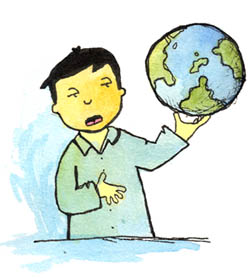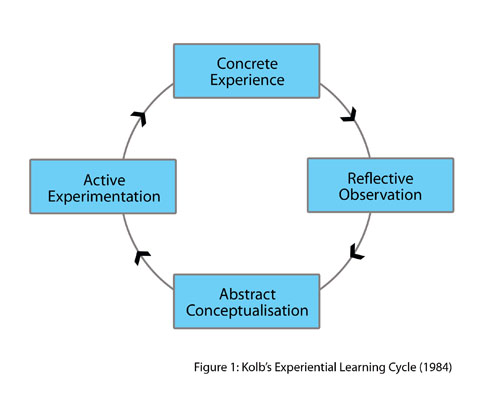Why Singapore’s English Teachers Should Embrace Singlish, Not Fight It
Is it time for Singaporean educators to embrace Singlish as a legitimate learning tool? What the Research […]
Read More
Nanyang Junior College’s William Yeo reminds Geography teachers of some things they tend to forget.
 One of my major complaints about the teaching of Geography in Singapore is that we focus too much on theory and neglect the practical aspects and uses of the subject. This is based on my own experience as a junior college teacher, a former Geography student, and one who has done research on the use of geographic field teaching.
One of my major complaints about the teaching of Geography in Singapore is that we focus too much on theory and neglect the practical aspects and uses of the subject. This is based on my own experience as a junior college teacher, a former Geography student, and one who has done research on the use of geographic field teaching.
I have also spoken to several teachers on their views of how the subject is taught and found that many wished that they could focus more on the practical aspects of Geography. And yet the question remains: Why should anyone complain about concentrating on the theoretical aspects of Geography? After all, examinations do not seem to focus on anything more than that.
The O-levels only require students to respond to questions of theoretical nature and even the A-levels only test field techniques in a minor way. The argument is simple: If theory is all the examination is asking for, then that is all we should give.
As cliché as this may sound, Geography is supposed to be alive and all around us. When was that last time we told our students to put aside their textbooks and truly look at our world through geographers’ eyes? Geography is a wide discipline that even we educators cannot totally grasp. Therefore, it cannot be limited to just the syllabus and its examination format. As much as we are responsible for our students’ results, we also need to promote our discipline and ensure that it is not reduced to a subject that simply requires students to “memorise and regurgitate”.
How can we reconcile these two responsibilities? Perhaps the answer lies in one of the hottest buzz phrases in our education scene today: experiential learning, a concept that seems easy to understand but is difficult to define and carry out.
Among contemporary models of experiential learning, David Kolb’s work is perhaps the most widely cited and researched. Basing his model on the theories of Dewey and Lewin, Kolb published his influential book Experiential Learning: Experience as the Source of Learning and Development in 1984. Since then, his ideas have had a dramatic impact on the design and development of many other learning models.
According to Kolb, the process of experiential learning continuously modifies the concepts through which we understand. He breaks down the process of learning into four stages of a cycle (see Figure 1):

Kolb defines experiential learning to be the process whereby knowledge is created through the transformation of experience (1984, p. 38). As we encounter the world, we gain concrete experiences. But experience may be forgotten, so we need to reflect on our observations to tap its teaching potential. These reflections will yield ideas which we can use to generate frameworks and make sense of the world around us.
But such frameworks are useless if they are not put to the test, so it is only through further experimentation that we can realise the true value of our frameworks and therefore, learn. As we continue to experience more, our existing knowledge may be further challenged. In other words, Kolb’s cycle explains how experience is transformed into knowledge as a continuous process.
This theory is appealing for a number of reasons. First, these kinds of models help us make a clear distinction between theory and practice. Second, it is a theory “whose central features are relatively easy to grasp and…can be readily applied to an individual session by one teacher or to a degree program taught by many” (Healey & Jenkins, 2000, p. 193). Third, the model allows flexibility, where students can enter the cycle at any of the stages as long as the teacher systematically takes the student through each stage of the cycle and ensures that effective links are made between each stage.
Healey and Jenkins (2000) strongly believe that Kolb’s theory serves as a useful framework in teaching Geography because it presents a way of structuring and sequencing the curriculum and specifically indicates how a session or entire course may be taught to improve student learning.
One way we can promote experiential learning is through a geographical field session. After teaching a new concept (the stage of abstract conceptualisation), take students out of the classroom and allow them to test its applicability for themselves (the stage of active experimentation). This forms a concrete experience which students are encouraged to carry with them into the stage of reflective observation for a fuller understanding of this new concept.
However, field sessions are not the only ways through which students gain experiences for learning. Since Geography is all around us, personal experiences still count in the cycle as well!
For example, we can ask A-Level students about the American fast-food restaurants they frequent or their Finnish and Korean handphones when discussing globalisation. Or have O-Level students explain why it is risky to have open-air barbeques in the months of November and December when teaching the topic on monsoons.
While many teachers could already be doing these things, we should not just stop there. The model wants us to go beyond merely recalling our experiences. Our students must reflect, conceptualise and test out their newly gained understanding!
Similarly, the model is critical of activities where students are not adequately prepared for the experience or are not given the opportunity to reflect and relate it to other aspects of the course. In my own research on students’ perspectives of field sessions, I found that more learning occurs when teachers conduct a proper briefing before and after the field session. This prepares them for what is to come and helps them consolidate what they learned in the field.
The aim of this article is not to criticise how Geography is taught in Singapore but remind fellow educators not to get carried away with delivering geographical content. In the end, our students could be left without any appreciation or understanding of Geography. Kolb’s model of experiential learning is useful in helping us avoid this trap.
In my introduction, I mentioned that the teachers I interviewed wished they had more opportunities to go beyond the mere delivery of content. Now that I have become a teacher as well, I am beginning to understand the various challenges involved. Yet, we should try our best not to allow these challenges to become convenient excuses. It would be a disservice to our discipline if we do not engage our students to think about Geography and truly value it.
References
Healey, M., & Jenkins, A. (2000). Kolb’s experiential learning theory and its
application in Geography in higher education. Journal of Geography, 99, 185-195.
Kolb, D. (1984). Experiential learning: Experience as the source of learning and
development. New Jersey: Prentice-Hall.